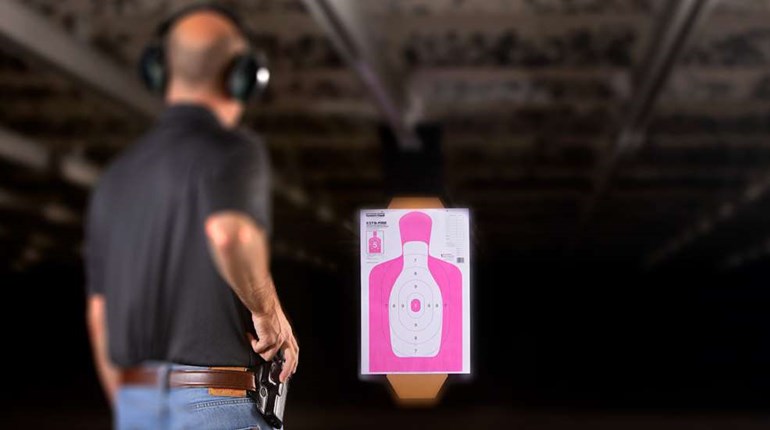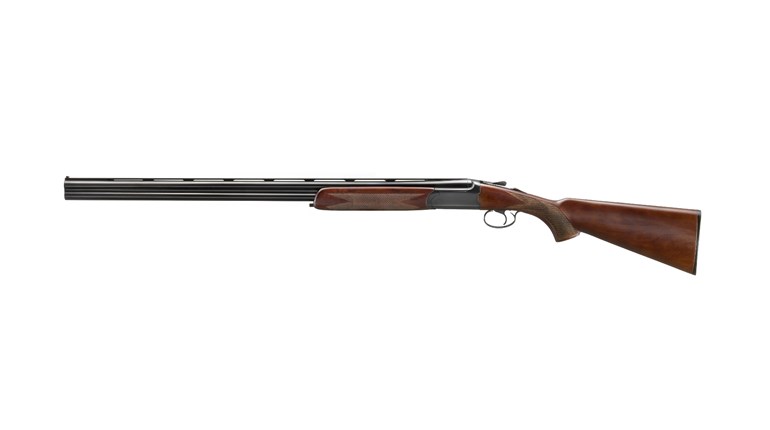
I believe, and we validate this through our training, there are essential skills a shooter must develop to be well-rounded, a generalist when it comes to being prepared for a deadly force encounter. The problem with being a generalist is there are lots of things to practice. It is easy to lose sight of—or, more likely, to focus on—what you like doing or are good at doing. As humans, we typically shy away from skills or subjects we are terrible at doing, like shooting with one hand. For as important a skill, it tends to get little to no practice. Here are three reasons learning to shoot one handed for self-defense is important: It prepares you for the times you only have one hand to fight with because the other is occupied somehow, it helps improve your grip strength and it helps diagnose common shooter errors.
As a young father, I remember taking my little one with me for a father/son breakfast to give mom a little break. It was early and a beautiful morning. He was little enough I carried him around town, partly because it was quicker and safer. On this morning we had parked off the main downtown square and were walking to our favorite breakfast spot. As we left the parking lot, we opted to walk along some side streets, where we ran into a bit of trouble. The first thing I noticed was an unseasonable wardrobe and hands that were hidden from my view. I moved across the walkway to increase the space and he changed his direction to vector toward us, and that was all it took for me to immediately start considering a firing solution. The problem, however, was that my weak hand was occupied holding my son.
Luckily the situation did not escalate to the point I needed to draw my handgun, but that did not stop me from problem solving how I would. Fortunately, I had spent a lot of time working one-handed shooting while on active duty and even had the privilege to work with some adaptive athletes who each only had one arm due to training accidents. The biggest takeaway from this experience was avoiding changing anything. These were guys who had developed strong handgunning skills as operators. About halfway through, and with much frustration, the question was posed to me: “Why are you trying to teach me something different?” I had no real good answer. It was after that moment when we threw out what we thought we knew about shooting one-handed. We then worked with these guys to develop solid shooting skills with one hand, and that was when our Strong Hand Only curriculum was really born. Flash forward to the incident with my son, and I realized I had let my ego keep me from practicing this neglected skill.
As our Strong Hand Only program gained popularity, we saw many new ways to apply the curriculum. This was at a time when domestic law enforcement was starting to incorporate working with shields and canines in everyday activities. I loved teaching this program, and over the years we’ve made a lot of interesting observations, all leading to the inevitable fact we don’t practice this skill enough. If I were to give you 100 rounds of ammunition with which to practice, what I would ask would be how much of that would you fire with only one hand? The truth is not much, probably less than five rounds or five percent. Of course, there are the outliers among us who are disciplined and practice this skill more frequently, but the vast majority of us avoid shooting with one hand. There are plenty of good reasons: Not knowing how to do it well, not feeling comfortable holding the handgun with only one hand and not having a solid grasp of marksmanship fundamentals. If you can get past these obstacles, shooting one-handed will produce some excellent results across the board.

Shooting one-handed can be a bit intimidating, especially for someone just starting out in the art. Even at my skill level, it is sometimes discouraging to see my shot groups resembling that of a shotgun blast. You cannot let this stop you from practicing, because without the drive to practice, you will not practice; if you don’t practice, you will never see improvement. This vicious cycle is avoidable if we start by establishing some realistic goals and standards. Start by lowering your expectations. Forget about what you see in Hollywood or on the internet. It will take time to get to a basic level of competence.
If we approach our strong-hand-only practice with the idea that “I must be as good with one hand as I am with two,” it is self-defeating. You are not going to be the same for the simple matter of physics. The physics the handgun demonstrates will be the same whether you have one hand, two hands or the handgun clamped down in a vice. The first thing we do is start at closer ranges. Since this is a skill realistically you might only do at close range, it makes sense to start there. Usually, the 3- and 5-yard lines will be close enough for you see good results early. If you are accustomed to using an 8-inch target, I would suggest moving to either a 10- or even 12-inch target in the beginning. The goal should be to keep most of the rounds within the designated target zone. If you start off with the larger targets, it will allow you to build some technique that with consistency will lead to improvement. As you practice more, you can increase the difficulty by reducing the target zone.
There are a couple of tricks I use when there is an aversion on the part of the student to losing control of the handgun. The first one is my go-to for those who are concerned the gun will jump out of their hands. We begin by taking our weak hand and basically relaxing it to the point it is applying no pressure, contact only. You have your weak hand in the correct position, but no pressure applied. It is there in reserve only. From there, we go to having the instructor apply pressure on top of your strong hand with a strong-hand-only grip. When I grip on top of your grip not only do you feel the pressure from my grip, but I can also feel if you are not applying enough pressure in your grip. It is a great cue to apply more pressure, which ultimately leads to you feeling confident you can not only hold the gun during recoil, but also start to control the recoil.
We slow things down during the learning stages so the student can think their way through the new skill. By slowing everything down, there is no pressure to go fast. Speed will come once your technique is properly developed. A common error I see when a student is learning a new skill is moving outside their level of control. When we take on a new skill, we must think through each of the sub-tasks. This ensures we are not only using good technique, but we are also exploiting the technique to the best of our ability. The ability to develop our skill in the conscious realm will ensure that when things are real, our technique is dialed in and reliable under stress.

When it comes to applying marksmanship fundamentals with only one hand, my biggest suggestion is to slow things down. I say that a lot, but this is especially true when learning a new skill. In this case, the benefit is focusing intently on the front sight and smoothly squeezing the trigger. This is nothing new, and truthfully is helpful regardless of the skill you are trying to learn. If you can focus on these two independent skills while maintaining a consistent grip, you might be surprised by your success. Maintaining a consistent and strong grip is the real secret. If I had my druthers, I would have you squeeze as hard as you can with one hand, but only if you can hold that tight grip for the duration of shooting. If not, then I would be happy with the strongest grip you can hold for the shooting duration. The key is to apply consistent grip pressure throughout. What you discover with a consistent grip is a higher level of fatigue with your hand strength. The more you practice the consistent grip, the better you will get at gripping, or the stronger you will be able to grip. Of course, you can do things to increase your grip strength. While everyone may not have access to a gym, simply hanging from a pull-up bar with an active grip (punching knuckles over the bar) can do wonders for your grip.
From a diagnostic point-of-view, I can use one-hand shooting to learn more about your technique. Without the weak hand, it means we are isolating common shooting errors into one hand. If we see a shot group with a windage error, it could mean trigger-finger placement is incorrect. If we see an elevation error, it could mean trigger movement error. If we see a combination of the two, what we call a compounding error, we typically tackle the windage error first. The point is, because we have isolated the errors to one hand, it makes diagnosing them much easier.
Shooting strong-hand-only is important for a few reasons. If you ever must respond to a deadly force encounter and your weak hand is occupied or injured, getting your handgun into the fight with just the one hand becomes essential.
Overcoming some of the challenges, such as confident grip, consistent grip and marksmanship fundamentals will lead to improved performance, just remember to adjust your expectations. The more you practice with one hand, the better you will grip your handgun, often leading to improved grip strength. So, the more you practice, the stronger your grip. It is also an easy way to self-diagnose shooting errors or, through an experienced instructor, help diagnose some common shooting errors.





































